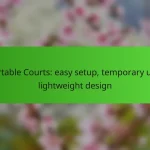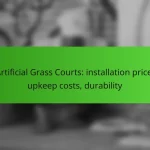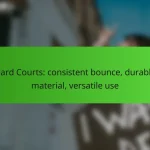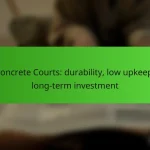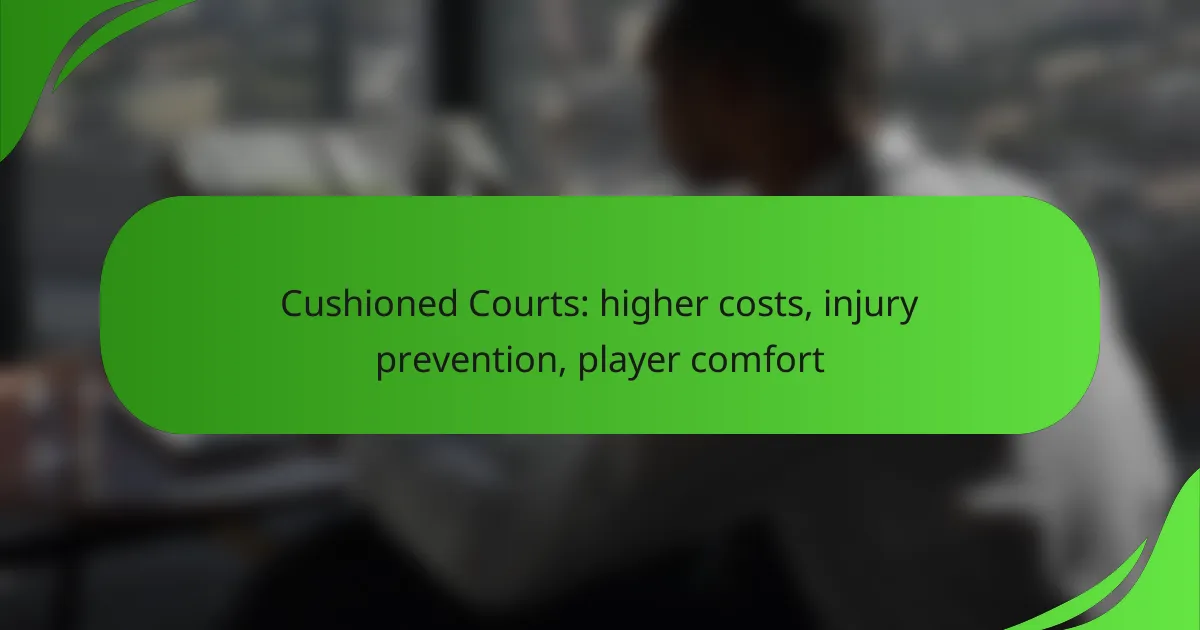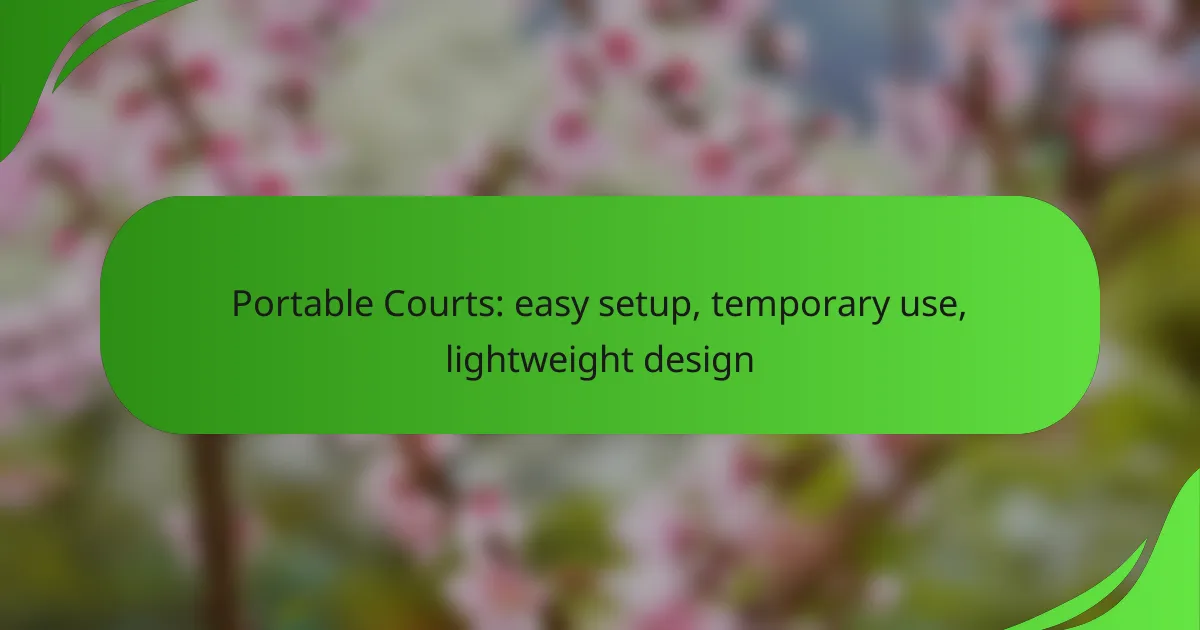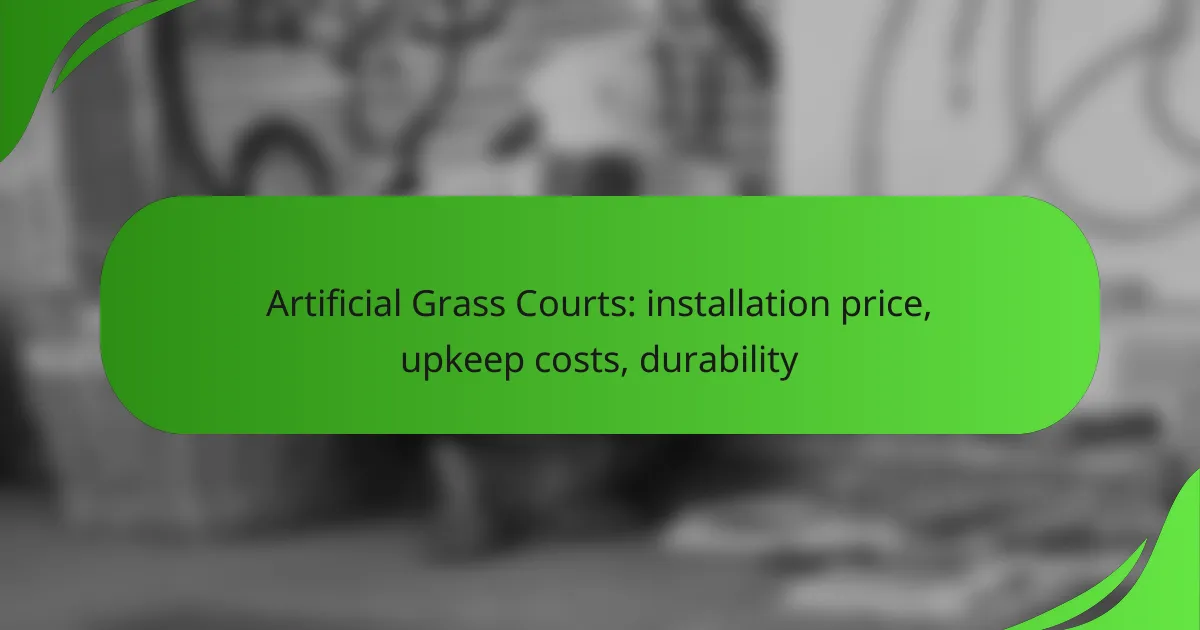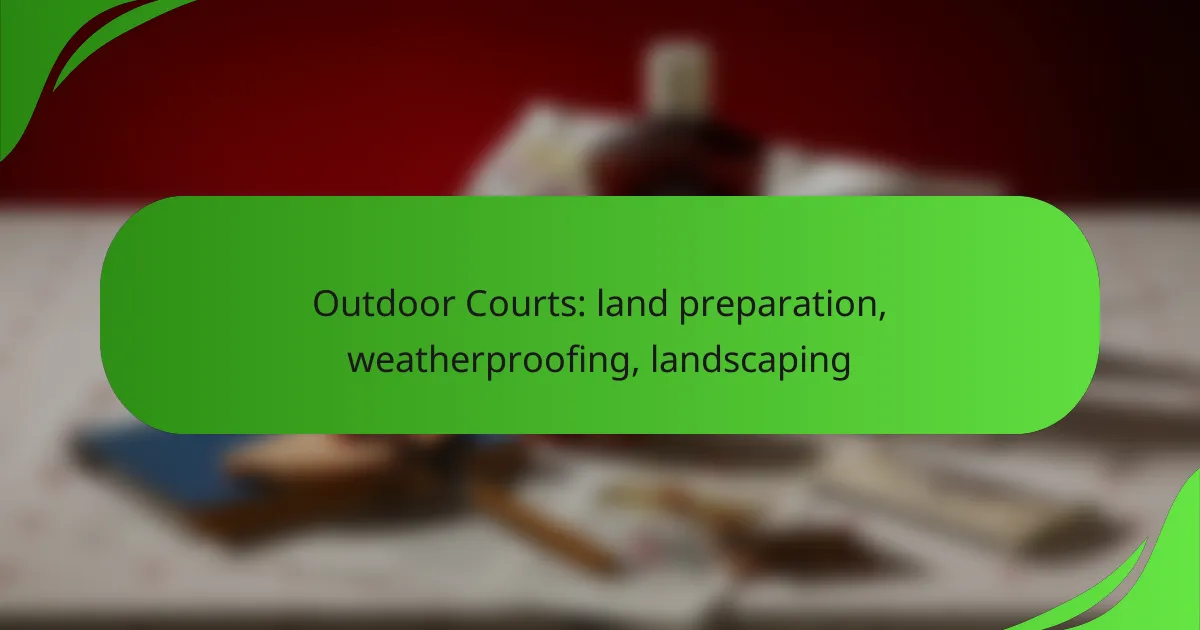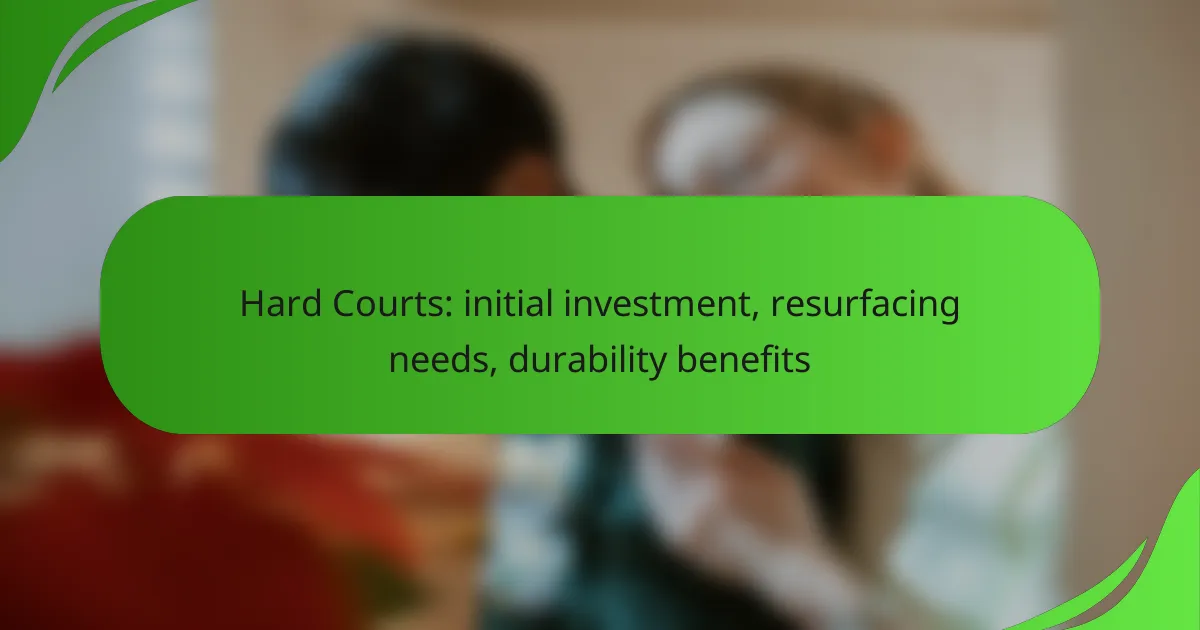Cushioned courts offer a unique solution for athletes by providing a softer playing surface that minimizes impact and enhances player comfort. This design not only helps prevent injuries but also improves overall performance, making it an attractive option for sports facilities. However, the installation and maintenance of cushioned courts can involve higher costs, necessitating careful budget considerations.

How do cushioned courts prevent injuries in players?
Cushioned courts are designed to minimize the risk of injuries by providing a softer playing surface that absorbs shock and reduces the impact on players’ bodies. This design enhances player comfort and stability, making it easier to perform at a high level while reducing the likelihood of joint and muscle injuries.
Shock absorption properties
The shock absorption properties of cushioned courts are critical in reducing the force experienced by players during high-impact activities. These courts typically incorporate materials like rubber or specialized foam that can compress and rebound, effectively dissipating energy. This can lead to a decrease in the stress placed on the body, particularly during jumps and sudden stops.
When selecting a cushioned court, look for options that meet specific performance standards, such as those outlined by the International Tennis Federation (ITF) or similar organizations. Courts that offer higher levels of shock absorption can significantly enhance player safety and comfort.
Reduced impact on joints
Cushioned courts significantly reduce the impact on joints, which is particularly beneficial for athletes who engage in repetitive motions. By softening the landing surface, these courts help alleviate stress on the knees, ankles, and hips, which are common injury sites in sports like basketball and tennis.
Players should consider the surface material and its density when choosing a cushioned court. A court with optimal cushioning can lower the risk of chronic injuries, such as tendonitis or stress fractures, allowing players to train and compete more effectively.
Enhanced player stability
Enhanced player stability is another key advantage of cushioned courts. The softer surface allows for better grip and traction, which can prevent slips and falls during play. This stability is crucial for maintaining balance while making quick lateral movements or sudden stops.
To maximize stability, players should ensure their footwear is compatible with the court surface. Proper shoe selection can further enhance grip and support, reducing the likelihood of ankle sprains and other injuries associated with instability on the court.
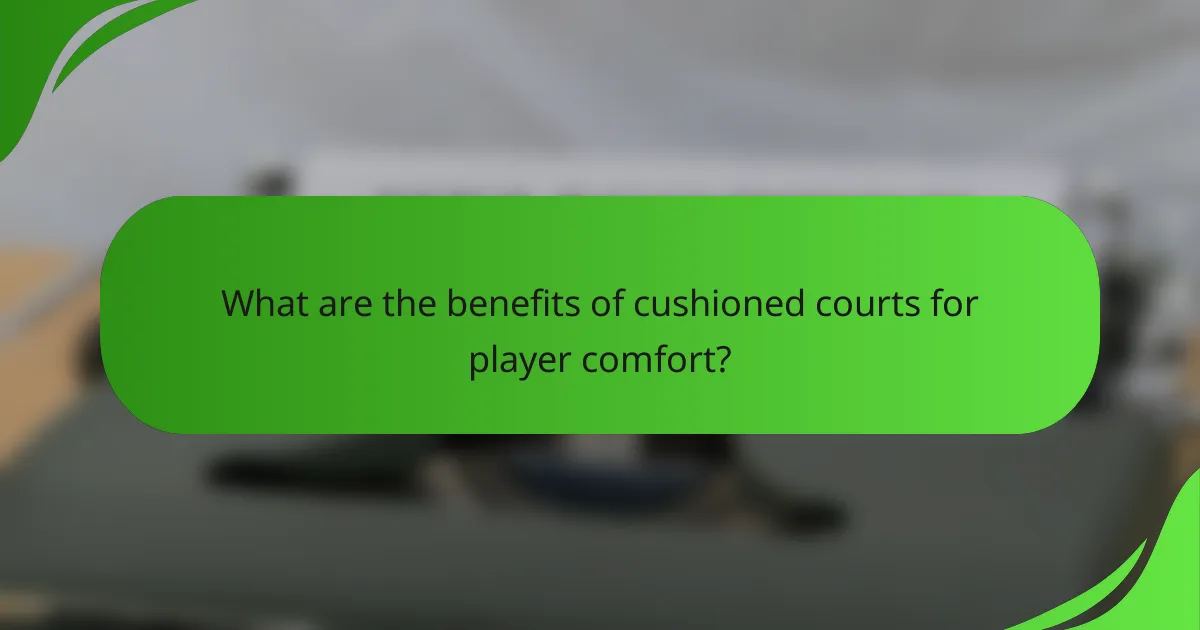
What are the benefits of cushioned courts for player comfort?
Cushioned courts enhance player comfort by providing a softer surface that reduces impact on joints and muscles. This design not only improves overall playability but also contributes to injury prevention and a more enjoyable experience for athletes.
Improved surface grip
Cushioned courts typically feature materials that enhance traction, allowing players to make quick movements without slipping. This improved grip can lead to better performance, as players can pivot and change direction more effectively. It’s essential to choose a surface that balances grip with slide to prevent injuries during rapid movements.
Temperature regulation
The materials used in cushioned courts often have better thermal properties, helping to regulate surface temperature. This can be particularly beneficial in warmer climates, where traditional surfaces may become uncomfortably hot. Players can enjoy longer sessions without the risk of overheating, making it easier to maintain focus and performance.
Minimized fatigue during play
Cushioned surfaces absorb more shock than hard courts, which can significantly reduce fatigue during extended play. By lessening the impact on joints, players can experience less soreness and discomfort, allowing for longer practice or game sessions. This benefit is crucial for maintaining high energy levels and performance throughout matches.

What are the costs associated with installing cushioned courts in the UK?
Installing cushioned courts in the UK involves various costs, including materials, installation, and ongoing maintenance. These factors can significantly impact the overall budget, making it essential to understand each component before proceeding.
Material costs
The material costs for cushioned courts can vary widely based on the type of surface chosen. Common options include rubber, foam, and specialized synthetic materials, with prices typically ranging from £20 to £50 per square meter. Selecting high-quality materials may increase initial expenses but can enhance durability and player comfort.
When budgeting for materials, consider not just the surface but also any necessary underlayment or drainage systems. These additional components can add £5 to £15 per square meter, depending on the complexity of the installation.
Installation expenses
Installation expenses for cushioned courts can be substantial, often accounting for 30-50% of the total project cost. Professional installation is recommended to ensure proper setup, which can range from £10 to £25 per square meter, depending on the contractor and the specific requirements of the site.
It’s crucial to factor in any site preparation costs, such as leveling the ground or removing existing surfaces. These preliminary steps can add another £5 to £20 per square meter to the overall installation budget.
Maintenance requirements
Maintenance for cushioned courts is generally lower than for traditional surfaces, but it still requires regular attention to ensure longevity. Routine cleaning and inspections are essential, with costs typically around £500 to £1,000 annually, depending on usage and environmental factors.
Additionally, periodic resurfacing may be necessary every 5 to 10 years, which can cost between £10 to £20 per square meter. Keeping up with maintenance not only prolongs the life of the court but also enhances player safety and comfort.
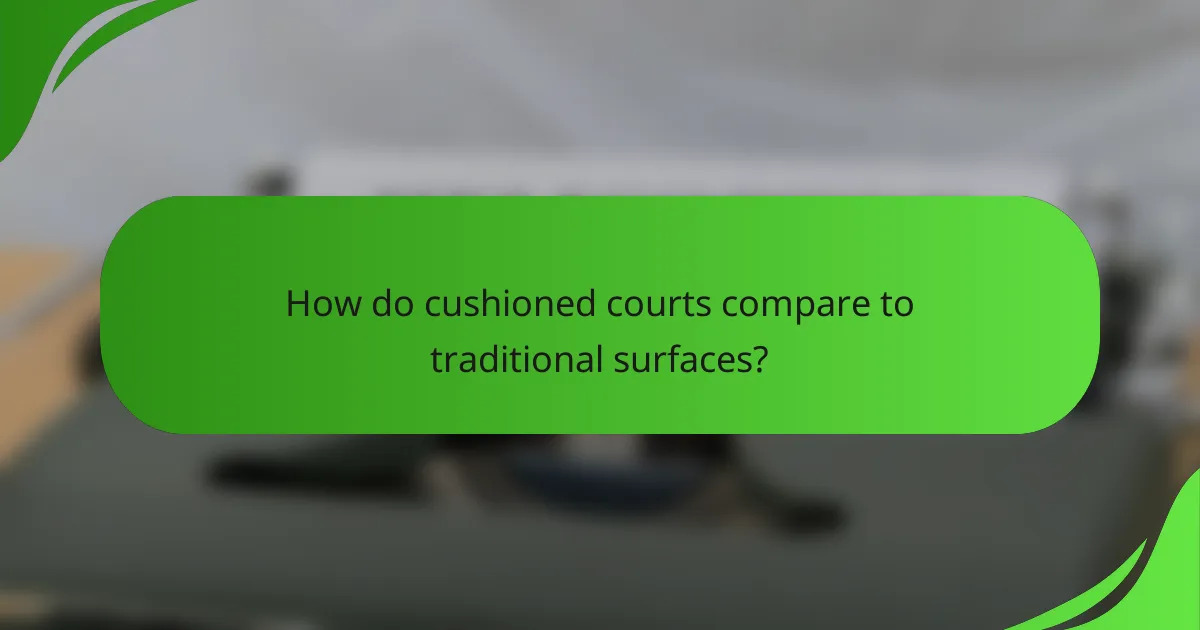
How do cushioned courts compare to traditional surfaces?
Cushioned courts provide enhanced comfort and injury prevention compared to traditional surfaces. They are designed to absorb impact, reducing stress on players’ joints while offering a consistent playing experience.
Durability differences
Cushioned courts typically have a longer lifespan than traditional surfaces due to their construction materials, which often include advanced polymers and rubber components. While traditional courts may require resurfacing every few years, cushioned options can last significantly longer, sometimes exceeding a decade with proper maintenance.
However, the durability can vary based on usage intensity and environmental conditions. For example, outdoor cushioned courts may face wear from UV exposure and weather, necessitating regular inspections and maintenance.
Performance metrics
Cushioned courts generally offer superior shock absorption, which can enhance player performance by reducing fatigue and allowing for longer play sessions. This surface type often provides a consistent bounce, which is crucial for sports like tennis and basketball.
In contrast, traditional surfaces may offer faster play due to their firmer nature, but they can increase the risk of injuries over time. Players should consider their style of play and injury history when choosing between these options.
Player feedback
Many players report greater comfort and reduced injury rates on cushioned courts, appreciating the softer landing during jumps and sprints. This feedback is particularly strong among athletes with prior joint issues or those engaged in high-impact sports.
However, some players prefer the responsiveness of traditional surfaces, feeling that cushioned courts can sometimes dampen their connection to the game. Ultimately, player preference can vary widely, making it essential to test both types of surfaces before making a decision.
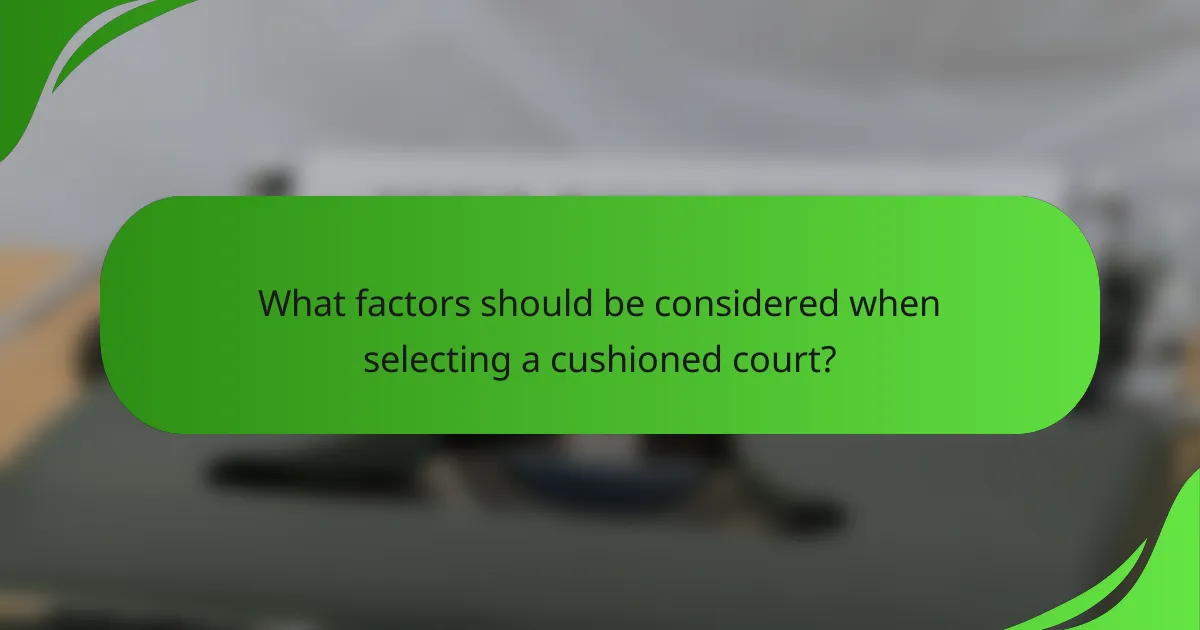
What factors should be considered when selecting a cushioned court?
When selecting a cushioned court, consider surface material, environmental conditions, and player needs. These factors influence costs, injury prevention, and overall player comfort, making them essential for optimal court performance.
Surface material options
The choice of surface material significantly impacts the cushioning, durability, and maintenance of the court. Common options include acrylic, rubber, and artificial grass, each offering different levels of shock absorption and traction. For example, rubber surfaces are often preferred for their excellent cushioning properties, while acrylic surfaces are known for their durability and ease of maintenance.
When evaluating materials, consider the type of sport being played, as some surfaces may be better suited for specific activities. For instance, tennis courts typically benefit from cushioned acrylic surfaces, while basketball courts may use rubber for enhanced grip and shock absorption.
Environmental conditions
Environmental conditions, such as temperature and humidity, can affect the performance and longevity of cushioned courts. High temperatures can cause certain materials to expand or degrade, while excessive moisture may lead to mold or surface deterioration. It’s crucial to select materials that can withstand the local climate.
Additionally, consider the location of the court. Outdoor courts may require weather-resistant surfaces, while indoor courts can focus more on player comfort and performance. Regular maintenance, including cleaning and inspections, can help mitigate the impact of environmental factors on the court’s condition.
